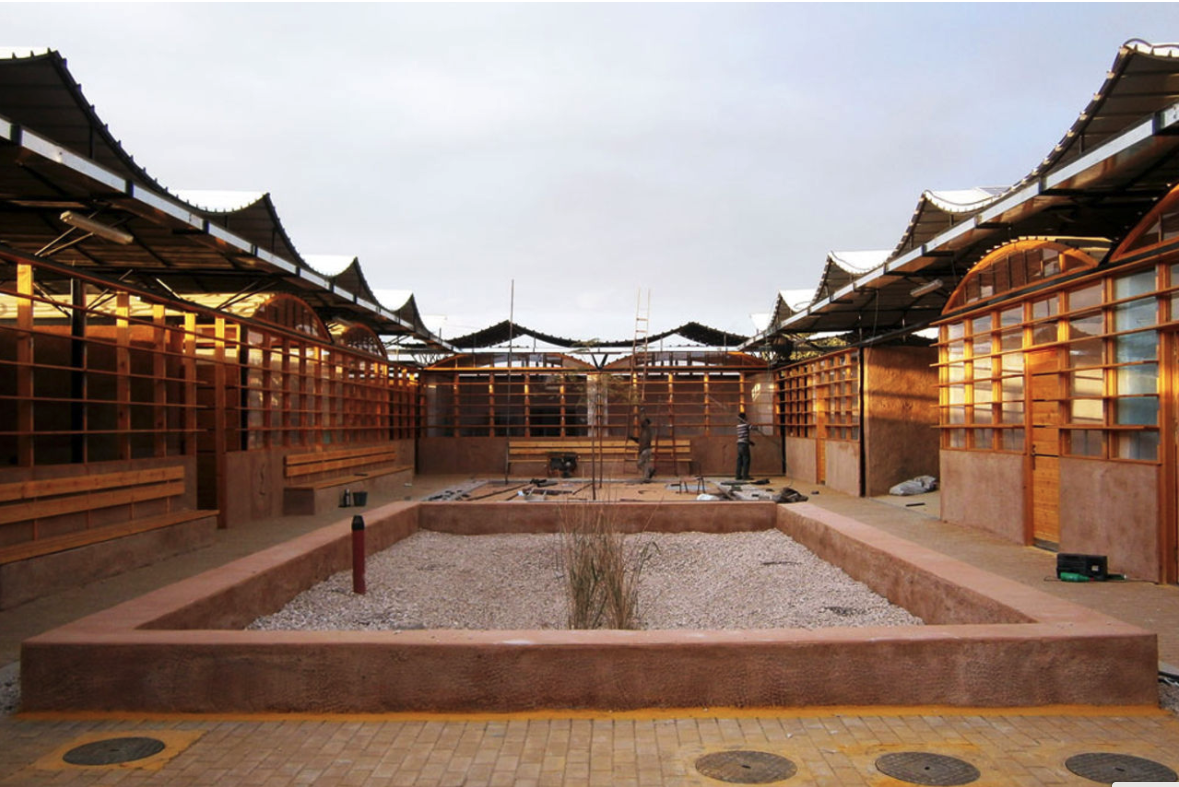
Interior courtyard of the Children’s Land Kindergarten’s multipurpose center, designed by Italian Mario Cucinelle architects, built in 2011-2012 (photo MC Archive).
Antony Loewenstein
The Children Land’s Kindergarten sits in the Bedouin village of Um Al Nasser in the Gaza Strip. Situated near the border with Israel, it’s a dusty area enlivened with the sound of playing children. Although the facilities were destroyed by Israel in 2014 during its war against Hamas, they were rebuilt with environmentally-friendly materials supported by Italian NGO Vento Di Terra. The classrooms are airy, colorful and cool in the summer.
When I visited in March 2017, I found dozens of children with a teacher wearing the full body abaya. There was space for 125 kids between the ages of four and six. The head of the kindergarten, Fatima Aburashed, told me that there were plans to grow fruit and vegetables so the youngsters could learn the sources of their food. She explained that many children were deeply traumatized during the 2014 conflict and the school ran programs to help with the stress. It felt like a form of resistance for the facility to reopen bigger and stronger than before.
Alongside the school was a women’s training center to teach vital skills such as carpentry, tailoring, physical exercise and toy production. Opened in 2015 thanks to the European Union, it was a welcome acknowledgement that the role of women wasn’t just in the home.
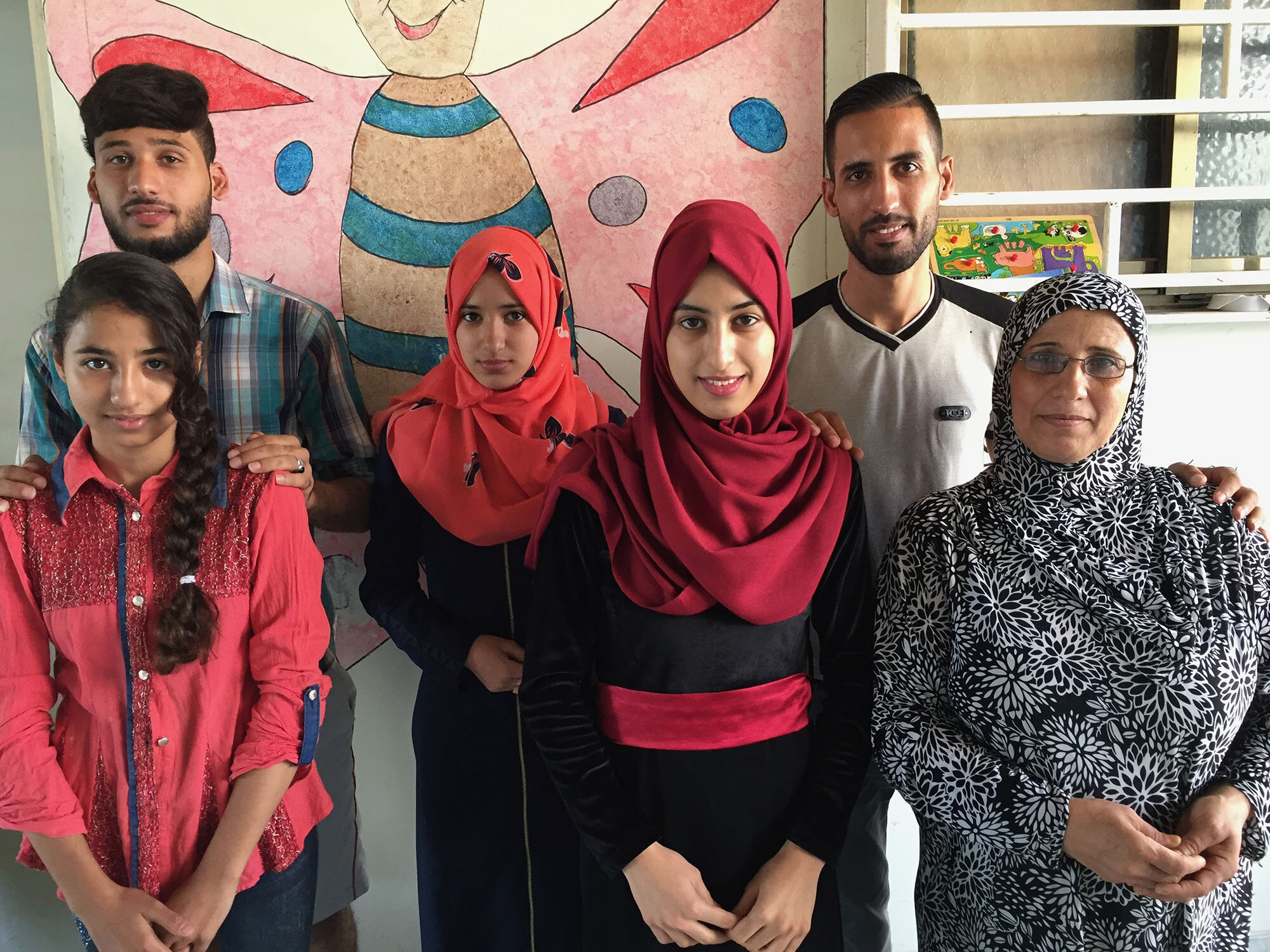
Gazan family displaced by the 2014 Israel/Hamas war (photo courtesy Antony Loewenstein).
Gaza is a conservative place. Locals told me that after the 2014 war, many men who initially refused permission for Bedouin women to learn new skills realized that it would improve the community. The ruling party Hamas supported the venture.
Walking through the training center was an inspiring experience. I saw no men — a rarity in Gaza — with women laughing and learning how to make useful goods for sale around Gaza and ideally in the West Bank and beyond (if Israel were to reduce the suffocating border closures). Unfortunately, political realities and then 12-year siege on the territory had put those dreams on hold. The manager said that they would keep on showing the world that Gazans were productive, creative and peaceful.
—•—
Gaza is a convenient abstraction for many Zionist Jews: An area controlled by a terrorist organization. A state run by Islamists who want to murder as many Jews as possible. Palestinian citizens who are blood-thirsty killers and need to be kept under control by military and surveillance technology. A population no longer under occupation, freed by Israel in 2005 when it removed its Zionist settlers. A place that no sensible Jew would ever want to go.
These are all incorrect and racist myths. I’ve heard them countless times over the years, both by people who couldn’t understand why I’d want to visit Gaza and others who believed that I’d end up in an ISIS-style execution video. Islamist extremists do live in Gaza but they’re a tiny, almost insignificant part of the population. As an atheist Jew, born in Australia and based in East Jerusalem between 2016 and 2020, I’ve learned to ignore such ignorant protestations.
I know where these ideas come from: the Jewish, Zionist mainstream and its lobbyists thrive on creating a false image of Palestinian self-determination as threatening to Jewish life. It’s useful for fundraising as well as political and media sympathy. I remember growing up in Melbourne, Australia in the 1980s and 1990s and hearing my cousins compare Palestinian leader Yasser Arafat to Adolf Hitler. Any sign of Palestinian identity had to be challenged and crushed. Another Jewish Holocaust was just around the corner.
I wasn’t knowledgeable enough back then but these views never sat well with me. The reflexive racism against Palestinians and Arabs in general seemed like a sickness within the Jewish Diaspora (and within Israel itself, it is endemic). This was one of the main reasons I ended formal association with the Jewish faith, not helped by intolerant rabbis who refused to accept any questioning of hard-line, pro-settler Zionism.
It is why I’m so pleased today that US groups such as Jewish Voice for Peace and IfNotNow are reclaiming what Judaism has often meant in history (though this has been tragically far less publicly apparent since Israel’s birth in 1948); proud dissent in the face of bullies, encouraging a future of equality for all citizens, whether Israeli, Palestinian, Christian, Muslim, Jewish or atheist.
I’ve been visiting Gaza since 2009, two years after Hamas assumed power. They’ve created a police state on the shores of the Mediterranean, detaining critics, executing supposed spies and restricting the rights of women. The party’s zealotry has only worsened after Israel, Egypt, the US and most of the international community insisted on maintaining an inhumane blockade on Gaza. Isolation breeds intolerance.
During my March 2017 visit to Gaza, I interviewed Hani Mouqbel, leader of the Hamas youth wing. He was amiable as we sat in his office overlooking the ocean. He stressed that he wasn’t against Jews, though wanted them to “go back to where they came from,” and was committed to creating an Islamic state. He opposed the Israeli occupation and claimed that “all Palestinians support the Hamas resistance project.”
Many Gazans I know vehemently oppose Hamas and its rigid interpretations of Islam.
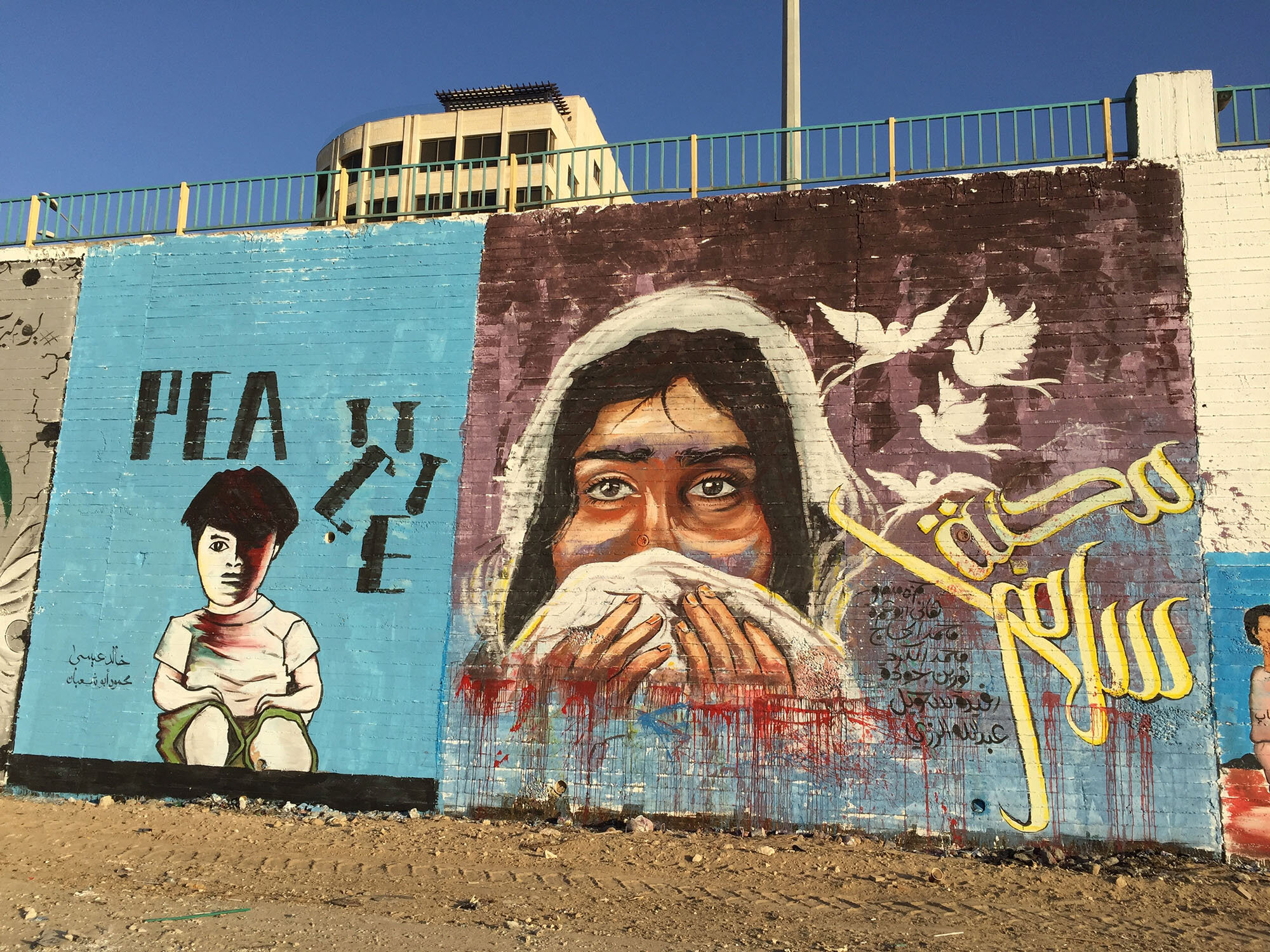
Local art on a Gazan street wall (photo courtesy Antony Loewenstein).
Psychologically, it’s vital for many Zionists to perpetuate the myth that Israel is the noble, innocent party in the conflict. “We want peace,” they claim. “It’s those murderous Gazans who want to slit our throats.” The fact that two million Palestinians are living in one of the most tightly-concentrated territories in the world, with high unemployment, a few hours of electricity a day and little freedom of movement, is classed as fault of the victim.
There’s a feeling in Gaza that’s impossible to put into words. I’ve always found its people welcoming and warm. During my last visit, with years of a brutal siege consuming everyone’s waking hours, curiosity about news from the outside world was palpable.
The air in Gaza smells different, sometimes infused with unprocessed sewage and at other times the sweet, sea air. Seeing Israeli industry on the horizon is a cruel joke inflicted on Gaza by the Israeli state. It’s so close and yet inaccessible for most Gazan citizens. The West Bank feels spacious in comparison to Gaza, its population connected to the globe by patchy internet and cell phone coverage and generator batteries. Nonetheless, the Israeli occupation remains ubiquitous.
The punishment of Gaza, and its resilient people refusing to disappear or die, is a motivating factor in my own work speaking out. Gaza is being strangled in my name, by an Israeli government that claims to speak for world Jewry, and it’s enough to make me scream. But silence is never an option. The surging humanity in Gaza, of students with potential and internet coders like Gaza Sky Geeks showing what’s possible in the tech space, is what keeps me returning to Gaza, highlighting its plight and its humanity.
—•—
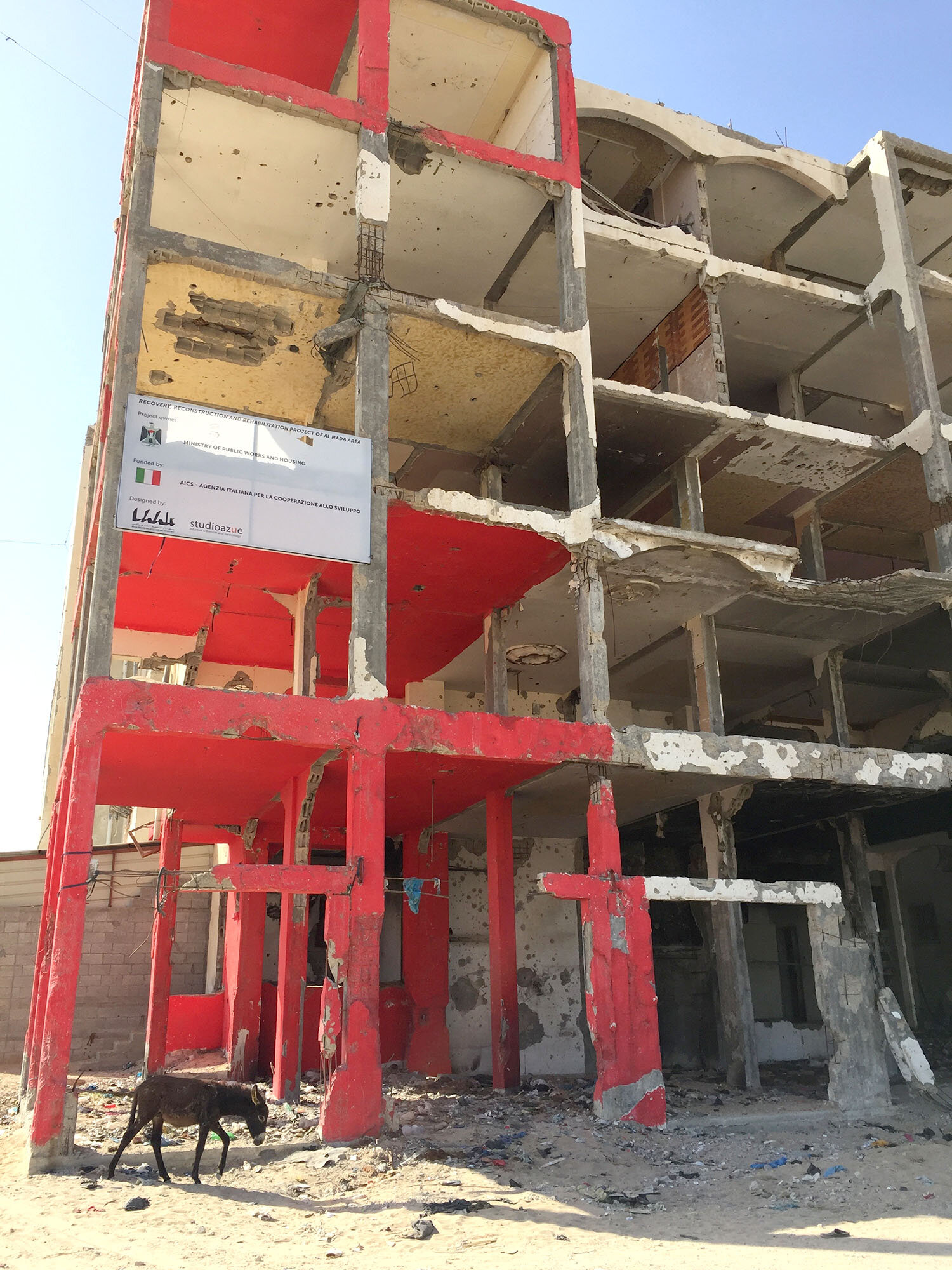
Destroyed building in Gaza after the Israel/Hamas war in 2014 (photo courtesy Antony Loewenstein).
Finding stories of hope in Gaza has been an increasing challenge. Back in 2009, few Gazans believed that their situation would drag on for more than a decade. Four major wars in ten years, with Israel constantly threatening more military action, was now enough to convince many Gazans that there was no viable future there. One woman told me that she believed every young Gazan would leave the territory if they could and make a life elsewhere. She was sick of politics and Hamas, the Palestinian Authority and Israel, the complicit Arab leaders and Washington. Hope was in short supply.
And yet it wasn’t entirely absent. Positive change was occurring. Buthaina Sobh, Executive Director of the Wefaq Society for Women and Child Care, told me in Rafah in 2017 that social attitudes were gradually shifting. “Intellectual women now recognize that they have sexual desires and can ask for it privately,” she said. Her organization provided support for women whose husbands were abusive or left them without support.
I attended an outdoor event organized by the group with 50 women hearing about gender-based violence and how they could claim their rights in a male-dominated society. “I feel proud when seeing this event,” Sobh said. “Happy that women can come and attend and leave their homes.”
—•—
The cruelty of both isolating and attacking Gaza, imposed by a belligerent Israel and its trusty sidekicks like Barack Obama, Donald Trump, Joe Biden, George W. Bush, Tony Blair, David Cameron, Malcolm Turnbull, Scott Morrison, Theresa May or Boris Johnson, is that the Gazans themselves are rendered unpeople, not worthy of sympathy or support. Their voices and identities are largely invisible in the mainstream media, twisted into a hateful mass of Arabs consumed by fanaticism. These are lies constructed by those who have neither been to Gaza nor care about its future.
During the 2021 Israeli onslaught against Gaza, where over 250 Palestinians were killed including at least 67 children, I attempted to learn the fate of the Children’s Land Kindergarten but couldn’t reach anyone. Meanwhile I was in contact with a Gazan friend in central Gaza. We corresponded almost every day and one day all she could write was, “we are still alive.” The randomness of the violence, with the threat of one’s entire family being wiped out by an Israeli missile strike, must have been unbearable.
But Gaza is so much more than a threat to be neutralized. It is a vibrant, crumbling, intense, beautiful, historical entity with some two million living, breathing souls. Walk along the shores of the Mediterranean, watch the fishermen of Gaza bring in their daily catch near stalls selling hot corn, and marvel at a people who have suffered more than any of us can imagine.
They deserve nothing less than our complete solidarity.
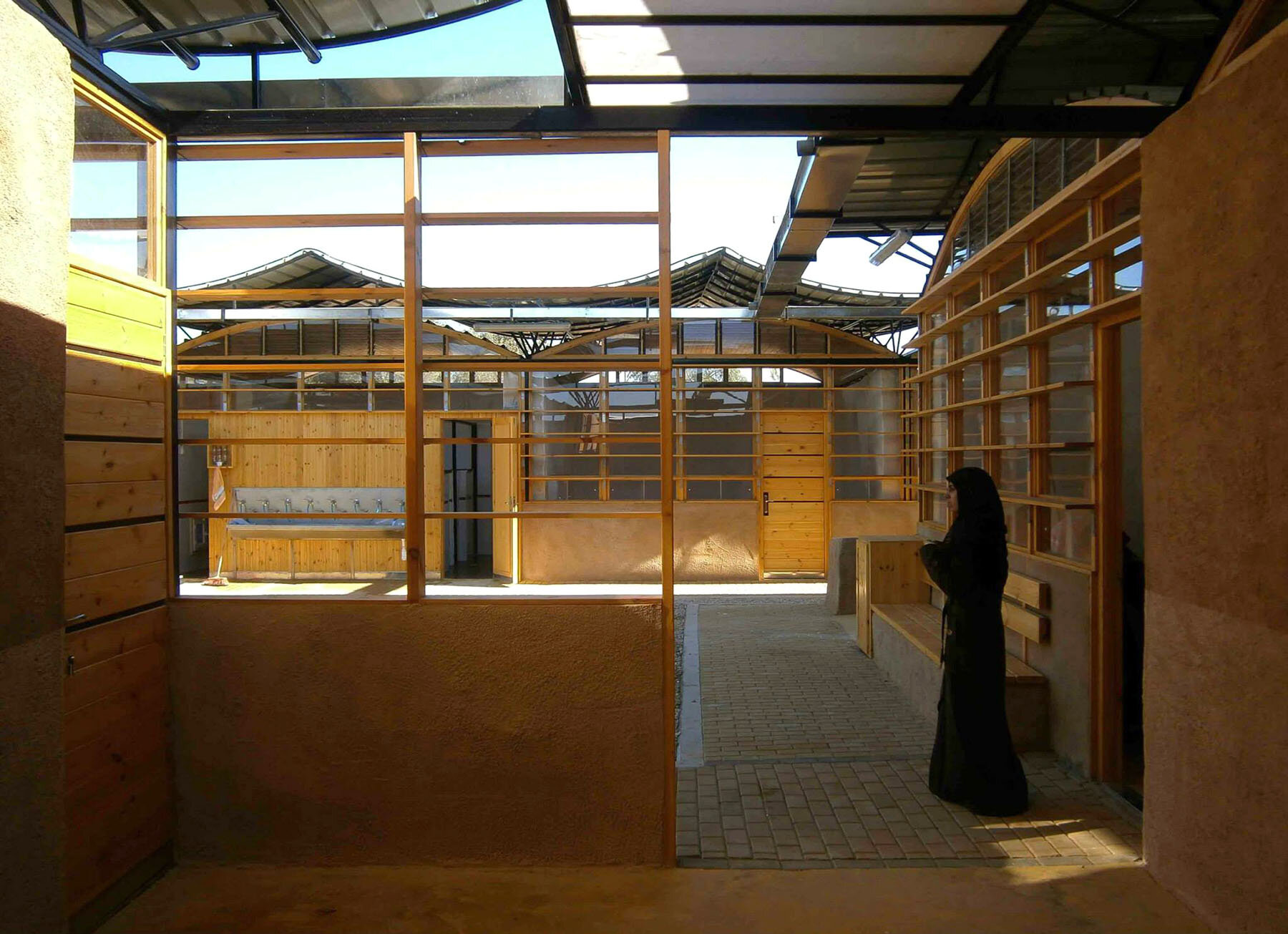
Another view of the Children’s Land Kindergarten multipurpose center (photo MC Archive).




